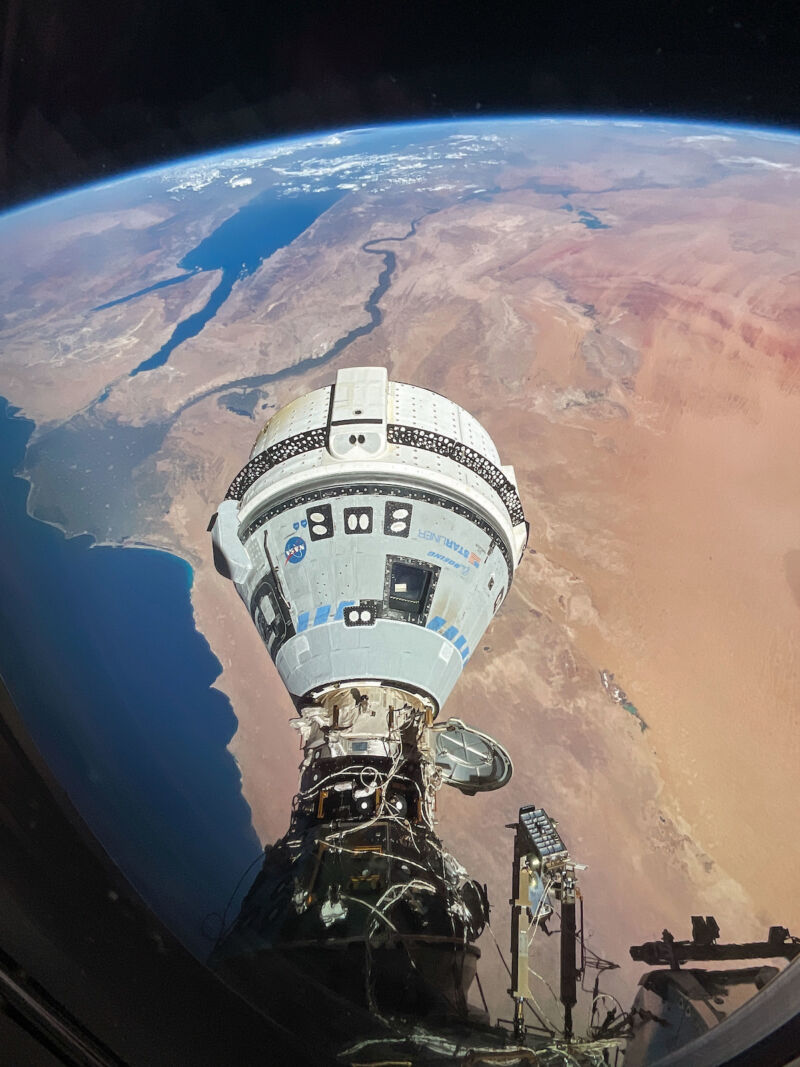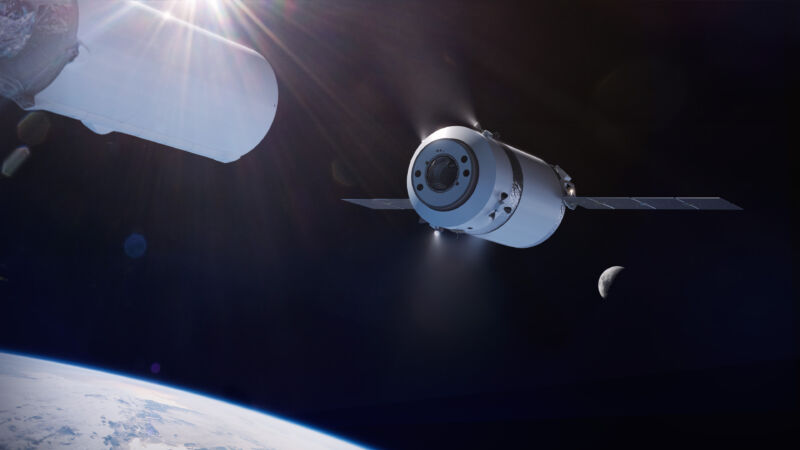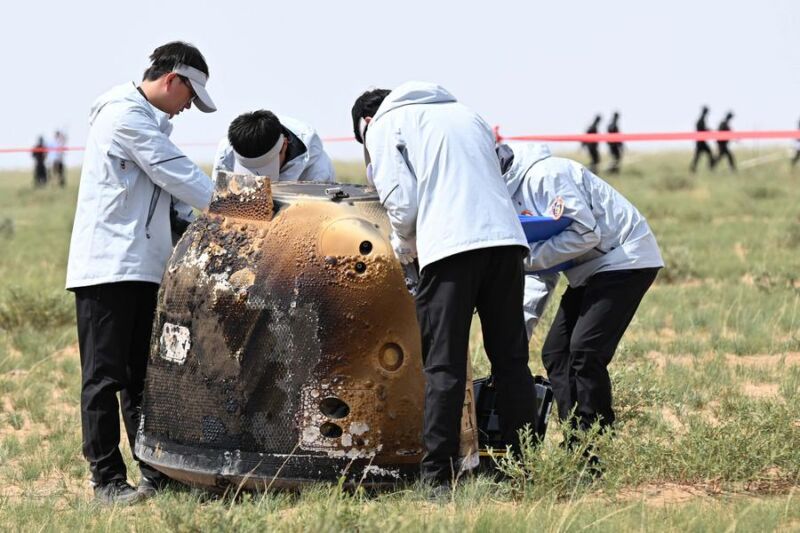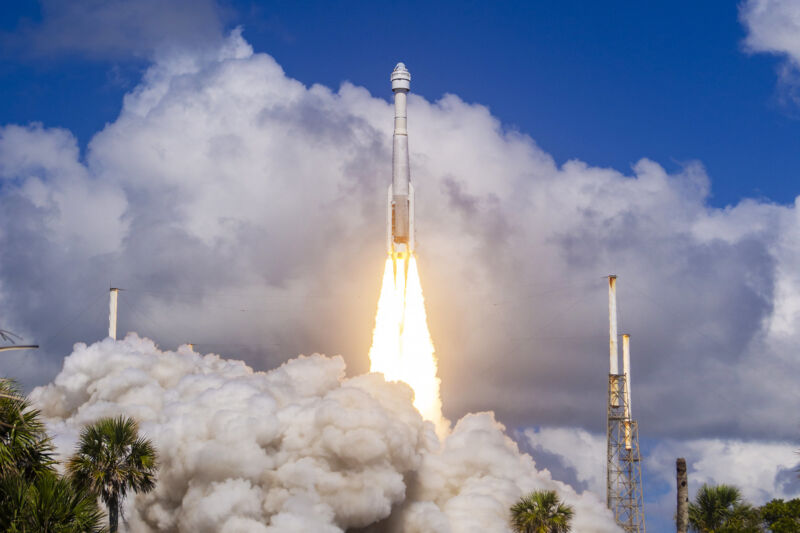Around the sun, into orbit, towards the asteroids, to the moon and back again It's been too long since an update on humanity's space exploration. Let's catch up. There's a lot going on:
Sun
NASA's
Solar Dynamics Observatory imaged Sol firing off
two strong solar flares. The European Space Agency (ESA)
published close-up
footage of the Sun taken by the
Solar Orbiter.
Venus
Researchers used
Magellan spacecraft data from the early 1990s to determine that Venus probably has some ongoing
volcanic activity.
On Earth's surface
Construction on the
Vera C. Rubin Observatory in Chile is nearly finished. In Texas SpaceX wants to produce one Starship rocket
per day in their impending StarFactory.
From Earth to orbit
Successes: after months of delays, Boeing's Starliner finally
launched and carried two astronauts
to dock with the International Space Station (ISS), albeit with persistent helium leaks and thruster problems (
previously). SpaceX launched and for the first time
successfully splashed down a Starship. SpaceX
reports it now carries 87% of orbital tonnage. A Long March 2C rocket carried a Franco-Chinese satellite, the Space Variable Objects Monitor (SVOM),
into orbit to study gamma ray bursts. NASA's first Polar Radiant Energy in the Far-InfraRed Experiment (PREFIRE) cubesat
rode a Rocket Lab Electron rocket from Māhia, New Zealand into orbit,
followed by another. Rocket Lab also
orbited a South Korean Earth observing satellite as well as a solar sail experiment.
GOES-U, the fourth and final satellite in the Operational Environmental Satellites (GOES) – R Series,
rode a Falcon Heavy
into orbit.
South Korea confirmed a North Korean launch
failed to reach orbit.
In Earth orbit
"
For the first time in history, three different crewed vehicles, Starliner, SpaceX's Dragon, and Russia's Soyuz, were all simultaneously docked" at the ISS.
Zebrafish on the Tiangong space station are "showing directional behavior anomalies, such as inverted swimming and rotary movement." (
video)
NASA has
delayed Starliner's return indefinitely. Leaks on the ISS are a
persistent problem. The Hubble space telescope
lost another gyroscope. An astronaut wants to
help.
Back down to Earth
The Indian Space Research Organisation (ISRO) is working on making its space missions
free of debris. A video
clip shows a Chinese rocket falling near a village. NASA confirmed that SpaceX debris
fell on North Carolina.
Earth's moon
Chang'e-6 (嫦娥六号)
blasted off from Earth, traveled to the moon, then landed in the
South Pole–Aitken basin, taking a
selfie, and planting a
flag made of stone. Two days later its ascender lifted off, carrying two kilograms of lunar material, which it delivered to its orbiter, which then transported the stuff
successfully to the Earth's surface. (
mix of official video footage and animation)
Lunar plans: Roscosmos and the China National Space Administration (CNSA) announced their intention to build
a nuclear power plant on the moon by 2035. A Japanese billionaire
canceled his planned lunar trip.
Mars
The ESA and NASA agreed on a shared Martian
rover project. NASA awarded nine companies grants to develop
feasibility studies for Martian missions.
To the asteroids
Beyond the orbit of Mars, heading to its first asteroid, NASA's Psyche spacecraft fired up its
electric thrusters. A research team applied AI to Hubble data and
found more than 1,000 new asteroids.
Saturn
NASA approved funding for the Dragonfly mission
to Titan.
In the Kuiper belt
Voyager 1 restarted
sending data all the way back to Earth. (
previously)
Way, way beyond the solar system
The James Webb space telescope
imaged the farthest known galaxy,
JADES-GS-z14-0.





